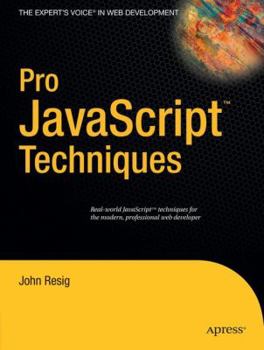Pro JavaScript Techniques
Select Format
Select Condition 
Book Overview
JavaScript usage on the Web has changed in recent times, due to increased JavaScript support in web browsers, and new techniques coming into popular use. From the scripting toy that it once was, JavaScript has matured to the point that it is regarded as a proper programming language. This book addresses today's approach to JavaScript in detail: modern browser support, including information on Internet Explorer 7; Object-Oriented JavaScript; testing and debugging; unobtrusive JavaScript techniques using DOM Scripting; Ajax; creating and using blocks of reusable code, and the future of JavaScript. All the concepts expressed in this up-to-the-minute reference are thoroughly backed up with real world examples and full-scale case studies. The book offers reusable functions for readers to use in their own projects, a significant time-saver. Also included are several reference sections that allow developers to look up details quickly and easily.





